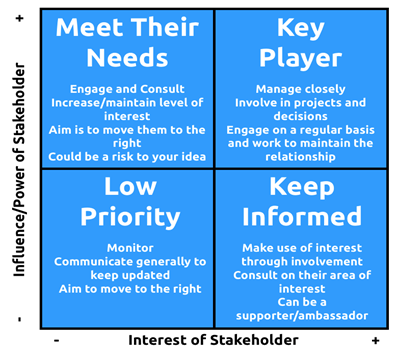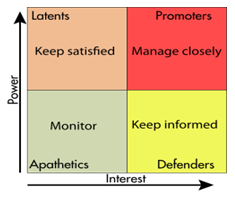The development of a project plan involves setting up timelines and targets to achieve as a part of the project processes. Project planning acts as the basis to compute the resource requirements. Tools like Gantt charts, CPM/PERT charts, project schedules, etc are used for the process of project planning.
Project management constitutes of Project planning that relates to the use of schedules such as Gantt charts to plan and consequently report progress within the project environment.
In general the process of project planning involves the following
- Defining the scope of the project
- Suitable methods for completing the project are determined.
- Under work breakdown structure the duration for the various tasks necessary to complete the work are listed and grouped.
- It involves organizing different areas of a project, like project plans, workloads and the management of teams and individuals.
- Using an activity diagram logical dependencies between tasks are defined which enables identification of the critical path.
- Duration of each task is estimated through a weighted average of optimistic, normal, and pessimistic cases.
- Critical chain method is used to add buffers in the planning to encounter any potential delays in the execution of the project.
- Slack time in the schedule is calculated using project management software.
- Estimation of necessary resources and costs for each activity is done and thereby allocating them to each resource, thus giving the total project cost.
- In order o achieve the appropriate balance between resource usage and project duration to comply with the project objectives, the project schedule is optimized
- Project schedule becomes as the baseline schedule.
- Progress is measured against the baseline schedule throughout the life of the project.
- In the end analysis of the progress is compared to the baseline schedule also referred as Earned Value M
Project stakeholders can be defined as entities either inside or outside an organization holding interest in a given project.
Stakeholders holder’s may include,
- Sponsor of a project
- Entities holding interest or a gain upon a successful completion of a project
- Entities holding a positive or negative influence in the project completion
An organization will have multiple stakeholders including customers, shareholders, employees, suppliers, etc. In marketing, customers are considered one of the most important stakeholders for managing its long-term value, with the primary objective of the firm being the management of customer satisfaction.
Stakeholder Management
Features of Stakeholder management
- It is a critical component to the successful delivery of any project, program or activity.
- Creates positive relationships with stakeholders through the appropriate management of their expectations and agreed objectives.
- It is a process and control that must be planned and guided by underlying principles.
- Stakeholder management within businesses, organizations, or projects prepares a strategy utilising information gathered.
Stakeholder Identification
Stakeholder analysis primarily involves brainstorming the stakeholders and take into account all the people who are affected by your work, all those who have influence over your work, or have an interest in its completion. It is therefore crucial to identify the correct individual stakeholders within a stakeholder organization.
Four steps in stakeholder management
- Identify, recognize and acknowledge the stakeholders
- Determine influence and interest of the stakeholders
- Establish communication management plan
- Influence and engage the stakeholders
It is very important to know more about the key stakeholders i.e., how likely they feel about the project and react to your project, how best to engage them in the project and how best to communicate with them.
Now the process of identifying the stakeholders often starts with a brainstorming session which involves holding discussions within the team and making a list of everybody you think could be an important stakeholder. One of the most important and popular techniques used for this is the SIPOC (suppliers, inputs, process, outputs, and customers) diagram. SIPOC is a very effective tool you can use to make sure you have captured all the stakeholders.
Stakeholders Prioritization
In the first phase, form a list of people and organizations that are affected by the work structure. Some of these stakeholders may have the power either to block or advance and some may be interested in what you are doing, and others may not even care.
Therefore, it is crucial to map out the stakeholders on a Power/Interest Grid and then classify them by their power over your work and by their interest in the work. Other tools are also available to map out your stakeholders and applying the best way to influence them.
Categorization of Stakeholders
- High power, interested people: These people must be fully engaged and make the greatest efforts to satisfy.
- High power, less interested people: It is suggested to put enough work in with this category of people to keep them satisfied, but not so much that they become bored with your message.
- Low power, interested people: keep these people adequately informed, and talk to them to ensure that no major issues are arising. These people can often be very helpful with the detail of your project.
- Low power, less interested people: again, monitor these people, but do not bore them with excessive communication.
For instance, your boss is likely to have high power and influence over your projects and high interest. Similarly your family may have high interest, but are unlikely to have power over it. So a clear understanding of the Stakeholders, helps in engaging and communicating the stakeholder through a variety of channels.
Diagram illustrating Stakeholders Power/Interest Grid

Principles of Stakeholder Engagement
- Communicate: Ensure intended message is understood and the desired response achieved.
- Consult, early and often: For useful information and ideas, ask questions.
- Being Human: Operate with an awareness of human feelings.
- Planning: Time investment and careful planning, has a significant advantage.
- Relationship: Develop trust with the stakeholders.
- Concern: Be empathetic and listen to the stakeholders, show that your care.
- Managing risk: Treat your stakeholders as risk and opportunities that have probabilities and impact.
- Compromise: Compromise across a set of stakeholders’ diverging priorities.
- Success: Make the stakeholder understand the value of the project.
- Take responsibility: Effective project governance is the key of project success
Stakeholder Analysis Matrix
Stakeholder analysis done for an issue involves weighing and balancing all of the competing demands on a firm by each of those having a claim on it, to meet the firm’s obligation for a given case. The process of stakeholder analysis does not exclude the interests of the stakeholders superseding the interests of the other stakeholders affected, wherein it ensures that all affected will be considered.
The Stakeholder analysis is primarily used during the preparation phase of a project to analyse the attitudes of the stakeholders in accordance to the possible changes. Stakeholder analysis can be done on a regular basis to track changes in stakeholder attitudes over time.
Types of stakeholders
- Primary stakeholders: These stakeholders are ultimately affected, either positively or negatively by an organization’s actions.
- Secondary stakeholders: These stockholders are the intermediaries, may be individual or organizations who are indirectly affected by an organization’s actions.
- Key stakeholders: These are stakeholders who can also belong to the first two groups and have a significant influence and holds importance within an organization.
Stakeholder analysis is aimed at developing cooperation between the stakeholder and the project team in order to ensure successful outcomes for the project
Methods of Stakeholder Mapping
Some of the most commonly used methods for stakeholder mapping
- Based on manager’s attention: This method of stakeholder mapping involves classification of stakeholders based on power to influence, the legitimacy of each stakeholder’s relationship with the organization, and the urgency of the stakeholder’s claim on the organization. The result of this classification assesses the groups of stakeholders deserving or requiring manager’s attention (Mitchell, Agle et al., 1997:854)
- Based on Key Performance Areas: This method of stakeholder mapping defines a process for mapping stakeholder expectations based on value hierarchies and Key Performance Areas (KPA) (Fletcher, Guthrie et al. 2003)
- Based on Ranking: This method of stakeholder mapping defines a process for ranking stakeholders based on needs and the relative importance of stakeholders as compared to others in the network. (Cameron, Crawley et al. 2010)
- Based on Threat: This method of stakeholder mapping offers a way to classify stakeholders according to potential for threat and potential for cooperation. (Savage, Nix et al. 1991)
- Based on Attitude: This method of stakeholder mapping develops a process of identification, assessment of awareness, support, influence leading to strategies for communication and assessing stakeholder satisfaction, and whether their attitude is supportive or opposing. (Turner, Kristoffer and Thurloway, 2002)
The various mapping techniques include the sub-set of results from a Web search of analysis techniques used by aid agencies, consultant groups or governments
- Influence-interest grid
- Power-impact grid
- Mendelow’s Power-interest grid
- Three-dimensional grouping of power, interest and attitude
- The Stakeholder Circle
Steps in Stakeholder Mapping
- Develop a categorised list of the members of the stakeholder community.
- Assign priorities accordingle
- Translate the ‘highest priority’ stakeholders into a table or a picture.
Potential list of stakeholders for any project always exceed both the time available for analysis and the capability of the mapping tool for sensibly displaying the results. The main obstruction is to focus on the ‘right stakeholders’ currently important and thereby use tools to visualise this critical sub-set of the total community.
One of the most common presentation styles used is a matrix to represent two dimensions of interest with frequently a third dimension shown by the colour or size of the symbol representing the individual stakeholders. The commonly used dimensions in the matrix include,
- Power (high, medium, low)
- Support (positive, neutral, negative)
- Influence (high or low)
- Need (strong, medium, weak)


